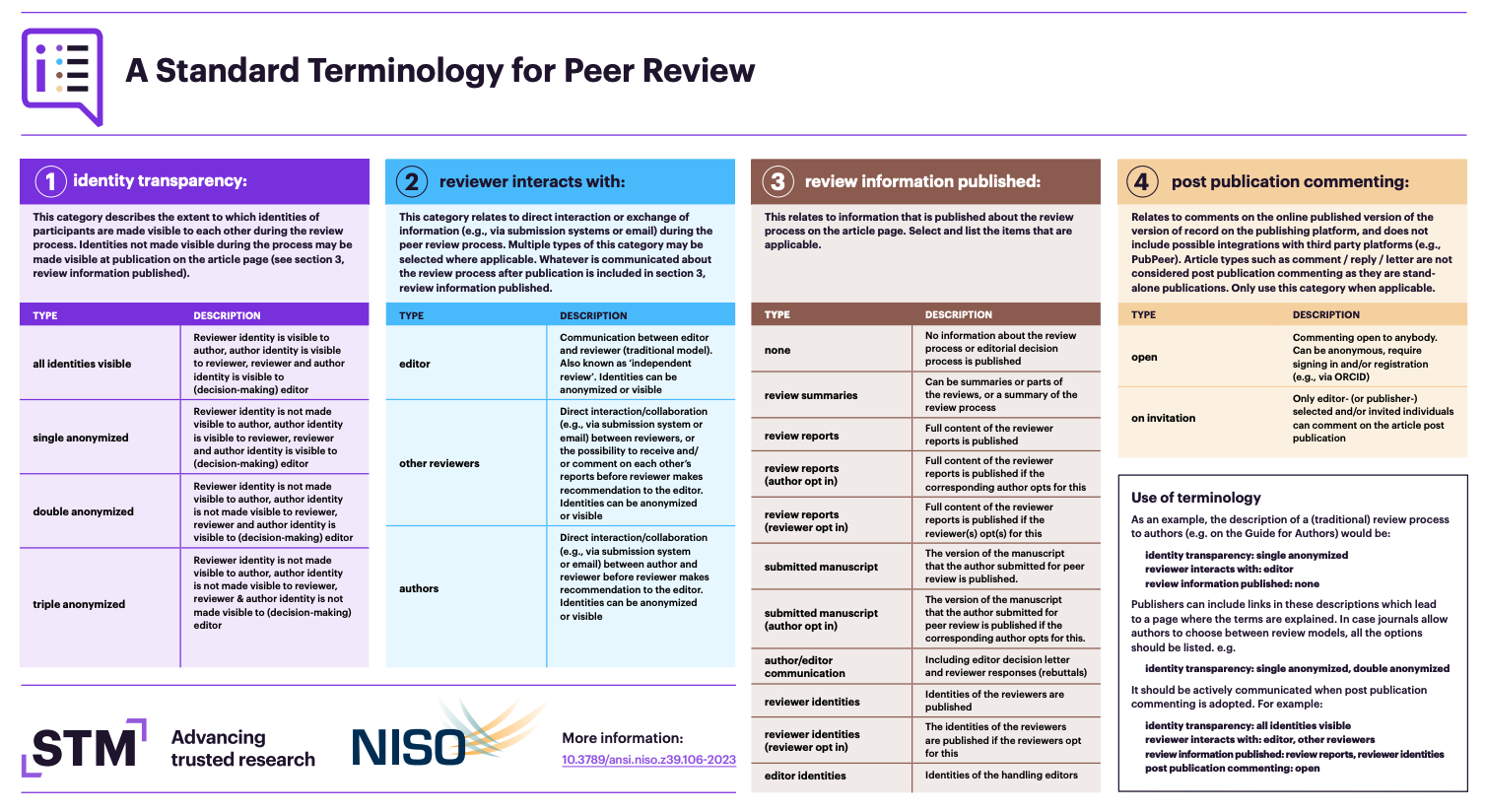Standardized Peer Review Terminology for Consistent and Transparent Alignment in Scholarly Publishing
Becoming a more pronounced practice in the mid-to-late 20th century, peer review remains the “golden standard” of evaluating knowledge. Effective and impartial peer review is essential to supporting quality scholarly research and lies at the core of the publishing process. Through the evolution of technologies, policies, and values overtime, emerging models of peer review have been introduced within the publishing ecosystem. With these new developments and transformations often comes misalignment or miscommunication across the diverse and complex scholarly landscape, particularly for novel open principles.
In early 2020, STM established a Working Group dedicated to standardizing terms and definitions related to peer review after recognizing a need for harmonizing nomenclature in the industry. With clear and consistent jargon in place, confusion can be reduced, transparency can be improved, and productive collaboration and engagement can be fostered across publications. After creating and piloting drafts of the taxonomy over the course of a year, the STM Working Group transitioned to a National Information Standards Organization (NISO) Working Group in July 2021 for further development. In July 2023, the proposed Peer Review Terminology was approved and published as a new American National Standard (ANSI/NISO Z39.106-2023).
The scope of the taxonomy focuses on defining different models of peer review in four key areas: identity transparency, who the Reviewer interacts with, which information about the review process is shared, and post-publication commenting. As a trusted industry partner, Aries Systems was proud to be represented as one of the many members of the NISO Working Group from 2021-2023 by Caroline Webber, Senior Product Manager. Aries has also recently implemented naming conventions from this standardized recommended practice within Editorial Manager® (EM) and ProduXion Manager® (PM) for sites with the English language pack. This includes replacing references to “blind” forms peer review with “anonymous” and “blind” Editor submission access restrictions with “blocked.”
This cross-organization collaboration through STM and NISO lead to the successful establishment of standardized peer review terminology that, in turn, will enable the scholarly community to better assess, compare, and communicate peer review practices across the industry. For information on the full NISO standard, read the publication here or view the snapshot below.

Image property of NISO

